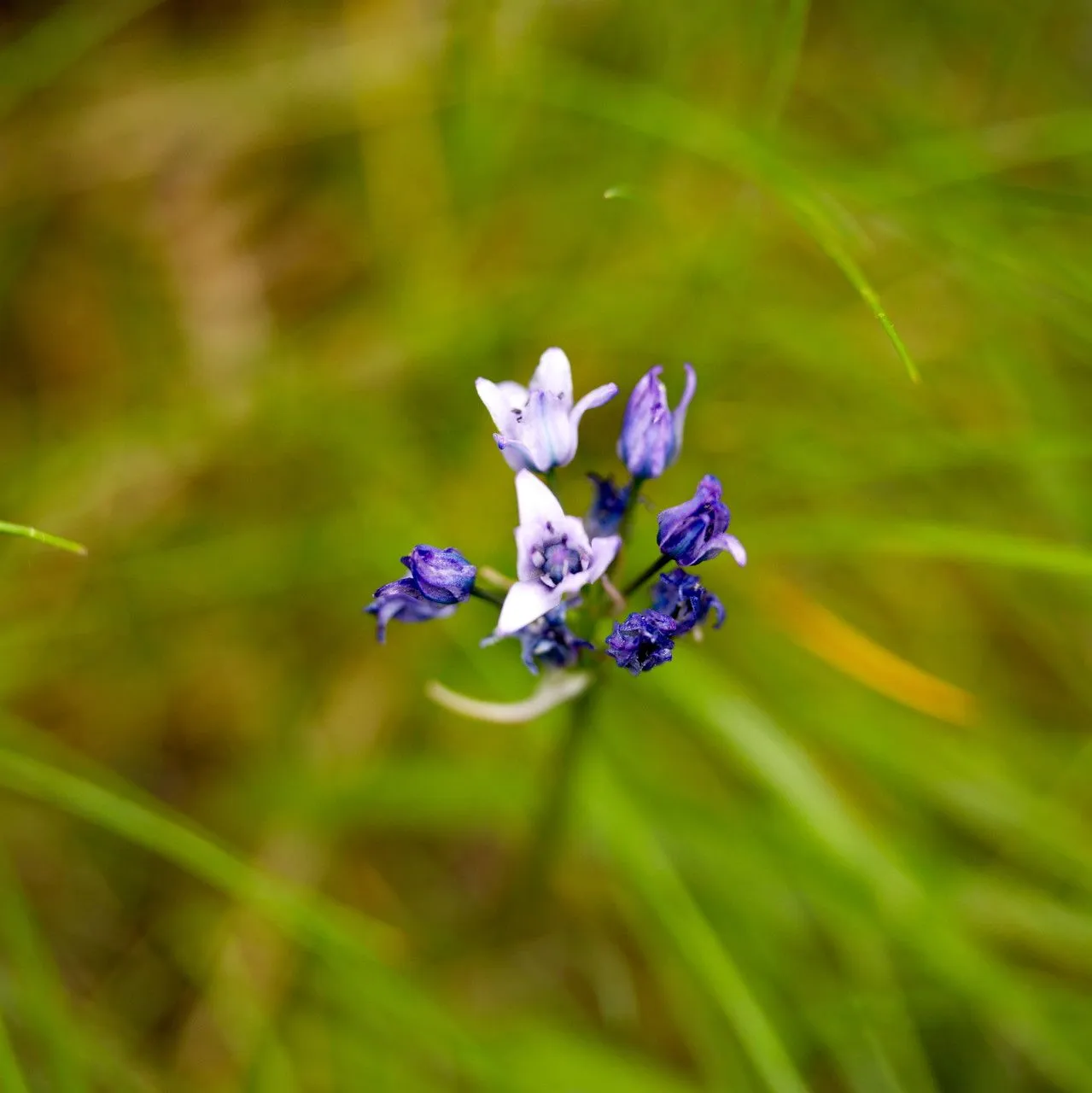
Author: Lindl.
Bibliography: Edwards’s Bot. Reg. 15: t. 1293 (1830)
Year: 1830
Status: accepted
Rank: species
Genus: Triteleia
Vegetable: False
Observations: SW. Canada to SW. Colorado and N. California
Wild hyacinth, scientifically known as Triteleia grandiflora, is a striking flower that is part of the Asparagaceae family. It captivates botanists and nature enthusiasts with its delicate beauty and wide distribution across North America. Originally documented by Lindl., this plant first gained botanical recognition in the early 19th century, as noted in Edwards’s Botanical Register (Volume 15, illustration 1293, 1830).
This perennial herb is indigenous to a broad swath of the Western United States, thriving from Southwestern Canada down to Southwestern Colorado and Northern California. The plant’s native habitats typically include grasslands, open woodlands, and areas with well-drained soils, where it can often be found adding splashes of bluish-purple to the landscape during its blooming season.
Wild hyacinth is characterized by its slender, upright stems that bear clusters of star-shaped flowers, each with six petal-like tepals that give the bloom a visually appealing symmetry. The blossoms are not only a treat for the eyes but also play a crucial role in their ecosystems, attracting pollinators such as bees and butterflies.
Being part of the Asparagaceae family, Wild hyacinth shares some commonalities with its relatives, including the production of bulbous roots that store nutrients, allowing the plant to survive through adverse conditions and re-emerge year after year. This adaptability and resilience make it a fascinating subject of study for botanists and horticulturists alike.
Overall, Wild hyacinth stands out not only for its beauty but also for its ecological importance and widespread presence in diverse North American habitats. Whether observed in the wild or appreciated in botanical collections, Triteleia grandiflora continues to be a plant of interest and admiration.
Eng: blue umber-lily, blue-lily, large-flower triteleia, largeflower triteleia, wild hyacinth, large-flowered triteleia, douglas’ brodiaea
Fra: tritéléia à grandes fleurs, triteleia de howell
En: Wild hyacinth, Large-flower triteleia, Blue-lily, Blue umber-lily, Largeflower triteleia, Large-flowered triteleia, Douglas’ brodiaea
Fr: Tritéléia à grandes fleurs, Triteleia de Howell
Taken Feb 26, 2011 by EOL − Ryan Batten (cc-by-nc-sa)
Taken Jan 1, 1900 by EOL − Walter Siegmund (cc-by-sa)
Taken May 29, 2021 by Drew keller (cc-by-sa)
Taken Apr 4, 2020 by F Z (cc-by-sa)
Taken May 31, 2022 by G T (cc-by-sa)
Taken May 26, 2019 by Henk Van Lottum (cc-by-sa)
Taken May 26, 2019 by Henk Van Lottum (cc-by-sa)
© copyright of the Board of Trustees of the Royal Botanic Gardens, Kew.
© copyright of the Board of Trustees of the Royal Botanic Gardens, Kew.
Growth form>: Bunch
Growth habit>: Forb/herb
Growth rate>: Moderate
Ph maximum: 7.5
Ph minimum: 6.0
Family: Myrtaceae Author: (F.Muell.) K.D.Hill & L.A.S.Johnson Bibliography: Telopea 6: 402 (1995) Year: 1995 Status:…
Family: Rubiaceae Author: Pierre ex A.Froehner Bibliography: Notizbl. Bot. Gart. Berlin-Dahlem 1: 237 (1897) Year:…
Family: Sapindaceae Author: Koidz. Bibliography: J. Coll. Sci. Imp. Univ. Tokyo 32(1): 38 (1911) Year:…
Family: Asteraceae Author: A.Gray Bibliography: Pacif. Railr. Rep.: 107 (1857) Year: 1857 Status: accepted Rank:…
Family: Fabaceae Author: Medik. Bibliography: Vorles. Churpfälz. Phys.-Ökon. Ges. 2: 398 (1787) Year: 1787 Status:…
Family: Aspleniaceae Author: (Cav.) Alston Bibliography: Bull. Misc. Inform. Kew 1932: 309 (1932) Year: 1932…